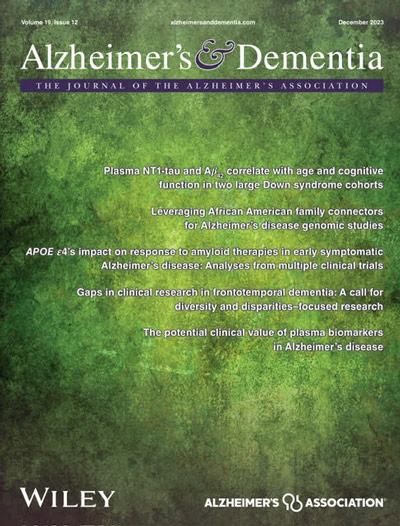Arterial spin labeling perfusion MRI in the Alzheimer's Disease Neuroimaging Initiative: Past, present, and future
IF 13
1区 医学
Q1 CLINICAL NEUROLOGY
引用次数: 0
Abstract
On the 20th anniversary of the Alzheimer's Disease Neuroimaging Initiative (ADNI), this paper provides a comprehensive overview of the role of arterial spin labeling (ASL) magnetic resonance imaging (MRI) in understanding perfusion changes in the aging brain and the relationship with Alzheimer's disease (AD) pathophysiology and its comorbid conditions. We summarize previously used acquisition protocols, available data, and the motivation for adopting a multi-post-labeling delay (PLD) acquisition scheme in the latest ADNI MRI protocol (ADNI 4). We also detail the process of setting up this scheme on different scanners, emphasizing the potential of ASL imaging in future AD research.
Highlights
- The Alzheimer's Disease Neuroimaging Initiative (ADNI) adopted multimodal arterial spin labeling magnetic resonance imaging (ASL MRI) to meet evolving biomarker requirements.
- The ADNI provides one of the largest multisite, multi-vendor ASL data collections.
- The ADNI 4 incorporates multi-post-labeling delay ASL techniques to jointly quantify cerebral blood flow and arterial transit time.
- ADNI 4 ASL MRI protocol is apt for detecting early Alzheimer's disease with cerebrovascular pathology.

阿尔茨海默病神经成像计划中的动脉自旋标记灌注磁共振成像:过去、现在和未来
在阿尔茨海默病神经成像计划(ADNI)20 周年之际,本文全面概述了动脉自旋标记(ASL)磁共振成像(MRI)在了解衰老大脑灌注变化以及与阿尔茨海默病(AD)病理生理学及其并发症的关系方面的作用。我们总结了以前使用的采集方案、现有数据以及在最新的 ADNI MRI 方案(ADNI 4)中采用多标记后延迟 (PLD) 采集方案的动机。我们还详细介绍了在不同扫描仪上设置该方案的过程,强调了 ASL 成像在未来 AD 研究中的潜力。
本文章由计算机程序翻译,如有差异,请以英文原文为准。
求助全文
约1分钟内获得全文
求助全文
来源期刊

Alzheimer's & Dementia
医学-临床神经学
CiteScore
14.50
自引率
5.00%
发文量
299
审稿时长
3 months
期刊介绍:
Alzheimer's & Dementia is a peer-reviewed journal that aims to bridge knowledge gaps in dementia research by covering the entire spectrum, from basic science to clinical trials to social and behavioral investigations. It provides a platform for rapid communication of new findings and ideas, optimal translation of research into practical applications, increasing knowledge across diverse disciplines for early detection, diagnosis, and intervention, and identifying promising new research directions. In July 2008, Alzheimer's & Dementia was accepted for indexing by MEDLINE, recognizing its scientific merit and contribution to Alzheimer's research.
 求助内容:
求助内容: 应助结果提醒方式:
应助结果提醒方式:


